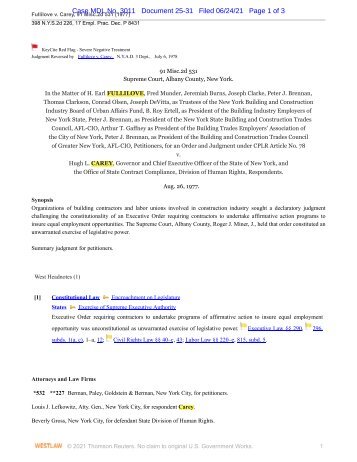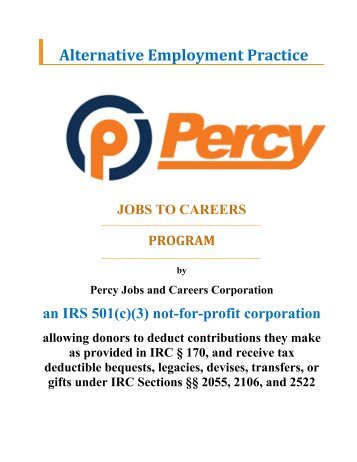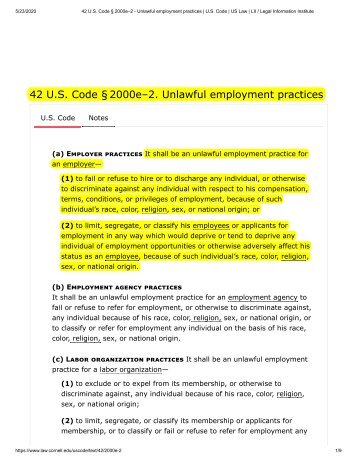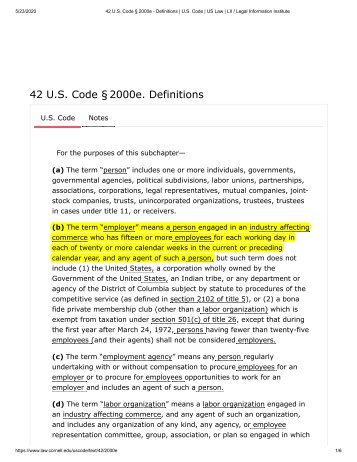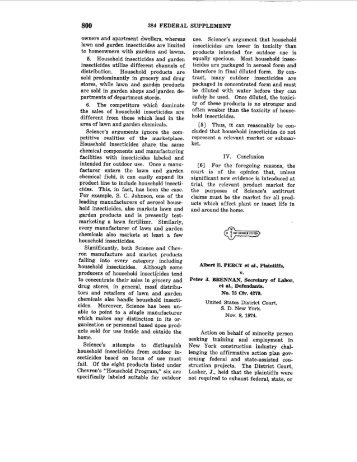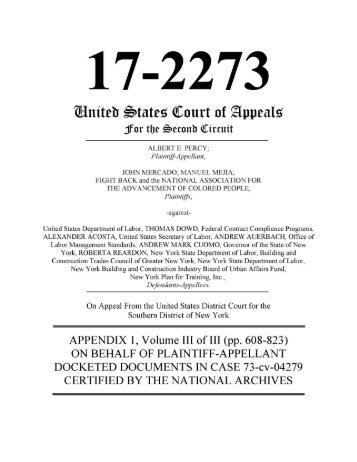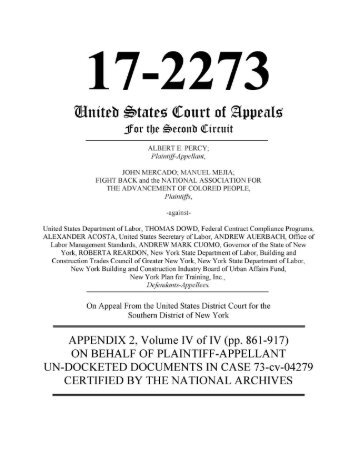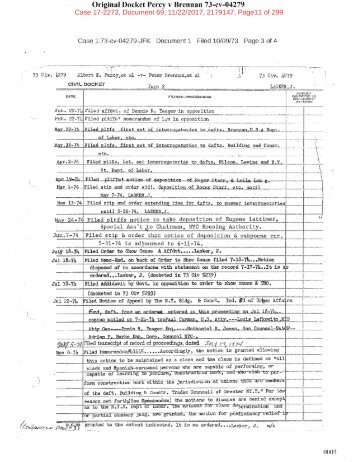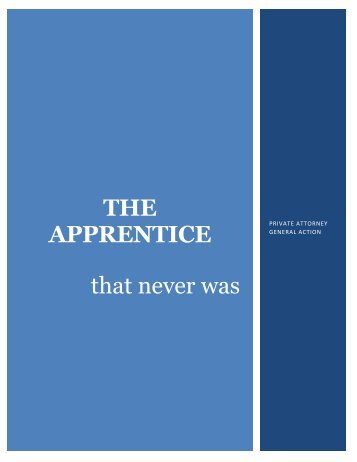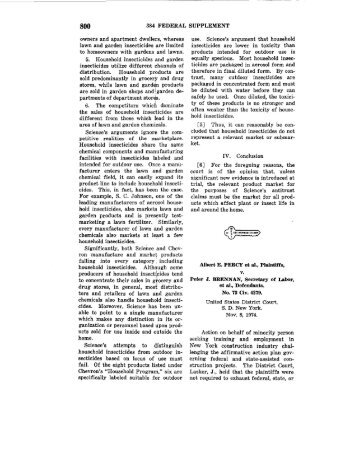The Percy Program
It is a fight to level the playing field to be able to compete for jobs and careers on the basis of skills and make available apprentice training to all. In 1973 Al Percy launched a class action lawsuit to give workers like him a chance to better their lot in life. It would also ensure the availability of skilled workers to build the infrastructure of the future.
Percy Program - Alternative Employment Practice EDNY 20-cv-06131
- Text
- Percy
- Workers
- Compensation
- Pageid
- Apprenticeship
- Osha
- Assessment
- Coverage
- Items
- Employment
- Edny
Case
Case 1:20-cv-06131-CLP Document 22-21 Filed 03/14/21 Page 10 of 64 PageID #: 2742 The Alternative Employment Practice can be mandated where the employment is paid for by Federal Funding. For 25 years Percy has operated successfully in New York to satisfy minority and disadvantaged participation. Percy has provided training to hundreds of people in the skilled trades. The mentoring and apprenticeship training programs are designed to minimize loss and risk in the workplace. Percy has operated an apprenticeship program in partnership with the State University of New York (SUNY) Maritime College. For 25 years this program has provided training to hundreds of people in trades such as plumbing, carpentry, steam fitting, electrician and masonry. It is through this exhaustive effort that Percy minimizes the risk and exposure to its surety bonds and other coverage. In the past, Percy has primarily focused on the construction industry’s need for training for unskilled workers and disadvantaged businesses with worker’s compensation and surety bonding as part of its program. Yet the Percy Program has application in all businesses where workers compensation is provided, and there is a need for health and disability, mentoring for technical support, and apprenticeship training necessary to develop and maintain master craftsmen skills. Percy is uniquely situated to handle this segment of the industry due to a 25 year history of apprenticeship and 17 years of bonding. Percy is authorized by the New York Departments of Education, Labor and Financial Services. 8 | P age
Case 1:20-cv-06131-CLP Document 22-21 Filed 03/14/21 Page 11 of 64 PageID #: 2743 ON THE JOB APPRENTICE TRAINING AND CONTINUING EDUCATION Apprentice training and continuing education shall be conducted under the guidance of the New York State Departments of Education and Labor. Apprenticeship training is ideally suited to train and create jobs for disadvantaged and minority persons. The apprenticeship training and continuing education is an outgrowth of a commitment to minimizing loss and risk in the work place. Through the instruction of apprentices of safe and healthful practices, worker’s safety is impacted in a positive manner resulting in greater control of risk reducing loss for employers and their carriers. Practical knowledge procedures adopted as policies and drilled as procedures by workers, both for new apprentices and existing for workers, drilling and training so that actions are second nature, drills that prepare workers to react as has been drilled. These emergency processes that must be drilled and drilled and drilled to address the unexpected. Percy sponsors apprenticeship under the Fitzgerald Act (29 U.S.C. § 50, the National Apprenticeship Act of 1937, section 1 (29 U.S.C. 50) under U.S. Department of Labor's Bureau of Apprenticeship and Training (BAT) and 29 C.F.R. Subt. A, Pt. 29 and Pt. 30, which is preempted for federal jurisdiction under the Employee Retirement Income Security Act of 1974 (ERISA) (29 U.S.C. § 1001 et seq.). Apprenticeship is the process of learning a skilled occupation through both on-the-job training (practical, paid experience) and learning the related technical knowledge in a classroom. A candidate must be 18 years old, and possess a GED (the Program will help a candidate obtain a GED) and shall incorporate outreach to veterans who have separated from military service. Successful completion of all requirements results in a Department of Labor Certificate which verifies the apprentice has reached Journeyperson competency; and from there the opportunities are limited only by the competency acquired. An apprentice is part of the workforce. Apprentices work under the guidance of more experienced craft workers called journeypersons. From them they learn the skills of the trade. As they master each skill, they become a more productive employee. Retention of skilled craftsmen will generate income and profits through risk management, loss control, and safety training provided through apprentice training and company mentoring more than justifying the cost of the programs and will not require subsidies. Even inefficiencies in the beginning are quickly overcome as skills take hold in the workplace. 9 | P age
- Page 1 and 2: Case 1:20-cv-06131-CLP Document 22-
- Page 3 and 4: Case 1:20-cv-06131-CLP Document 22-
- Page 5 and 6: Case 1:20-cv-06131-CLP Document 22-
- Page 7 and 8: Case 1:20-cv-06131-CLP Document 22-
- Page 9: Case 1:20-cv-06131-CLP Document 22-
- Page 13 and 14: Case 1:20-cv-06131-CLP Document 22-
- Page 15 and 16: Case 1:20-cv-06131-CLP Document 22-
- Page 17 and 18: Case 1:20-cv-06131-CLP Document 22-
- Page 19 and 20: Case 1:20-cv-06131-CLP Document 22-
- Page 21 and 22: Case 1:20-cv-06131-CLP Document 22-
- Page 23 and 24: Case 1:20-cv-06131-CLP Document 22-
- Page 25 and 26: Case 1:20-cv-06131-CLP Document 22-
- Page 27 and 28: Case 1:20-cv-06131-CLP Document 22-
- Page 29 and 30: Case 1:20-cv-06131-CLP Document 22-
- Page 31 and 32: Case 1:20-cv-06131-CLP Document 22-
- Page 33 and 34: Case 1:20-cv-06131-CLP Document 22-
- Page 35 and 36: Case 1:20-cv-06131-CLP Document 22-
- Page 37 and 38: Case 1:20-cv-06131-CLP Document 22-
- Page 39 and 40: Case 1:20-cv-06131-CLP Document 22-
- Page 41 and 42: Case 1:20-cv-06131-CLP Document 22-
- Page 43 and 44: Case 1:20-cv-06131-CLP Document 22-
- Page 45 and 46: Case 1:20-cv-06131-CLP Document 22-
- Page 47 and 48: Case 1:20-cv-06131-CLP Document 22-
- Page 49 and 50: Case 1:20-cv-06131-CLP Document 22-
- Page 51 and 52: Case 1:20-cv-06131-CLP Document 22-
- Page 53 and 54: Case 1:20-cv-06131-CLP Document 22-
- Page 55 and 56: Case 1:20-cv-06131-CLP Document 22-
- Page 57 and 58: Case 1:20-cv-06131-CLP Document 22-
- Page 59 and 60: Case 1:20-cv-06131-CLP Document 22-
- Page 61 and 62:
Case 1:20-cv-06131-CLP Document 22-
- Page 63 and 64:
Case 1:20-cv-06131-CLP Document 22-
Inappropriate
Loading...
Mail this publication
Loading...
Embed
Loading...
